Sato Shoko’s Travel Report Local Seafood and Local Shoyu Brewers
Wild Kanezaki Tiger Pufferfish and Maruyoshi Shoyu
Maruyoshi Shoyu has been producing a wide variety of authentic soy sauces, including honjozo (“true brew”), in Munakata for many years. Culinary expert Shoko Sato introduces a dish known as fukusuki using locally caught wild tiger pufferfish and prized local soy sauce.
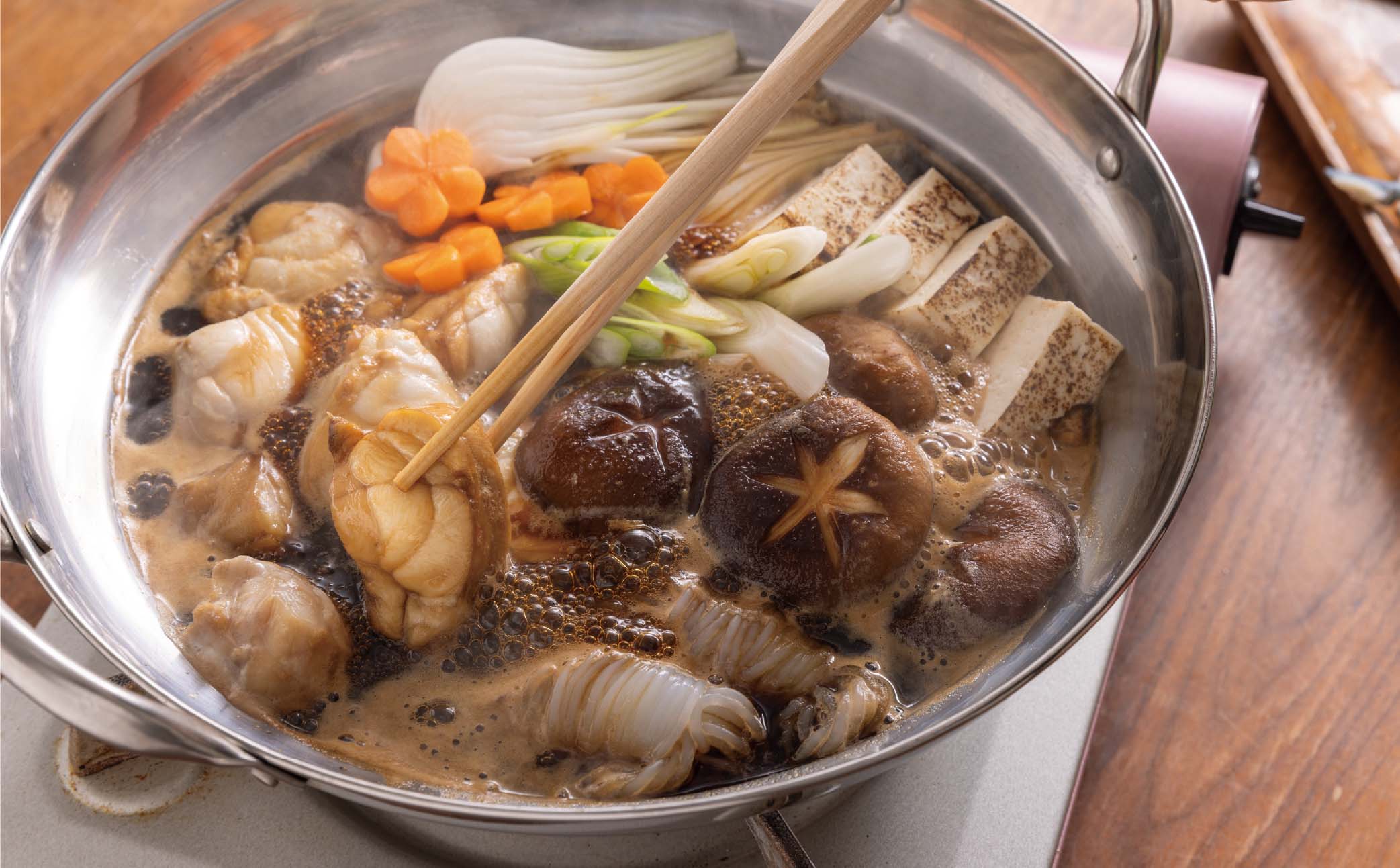

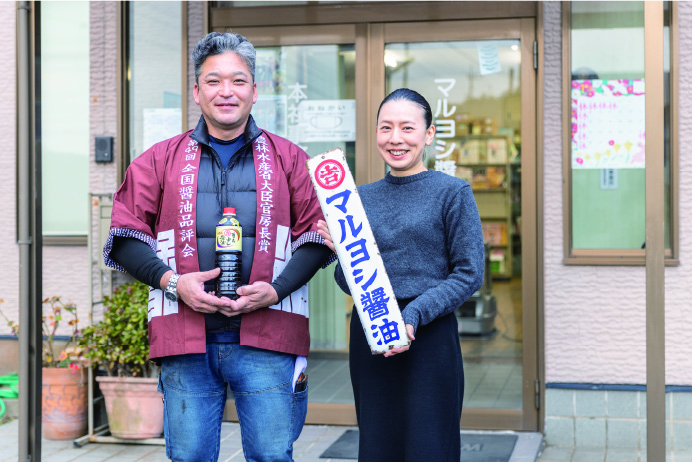
https://www.maruyoshi-syoyu.co.jp/
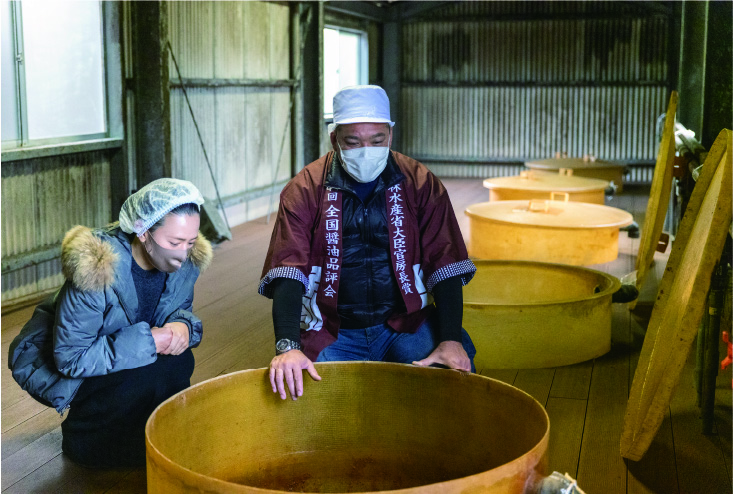
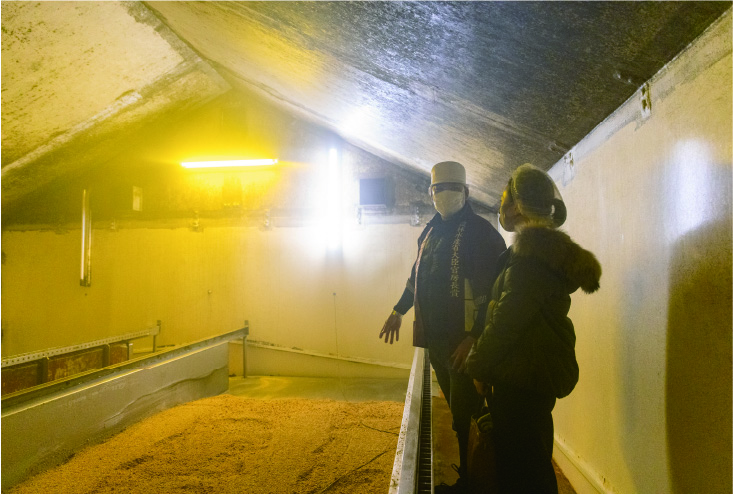


The umami of full-bodied soy sauce with firm fugu
Maruyoshi Shoyu is less than three minutes by car from Kanezaki Fishing Port and is marked by a yellow sign. Idyllic fields stretch out in front of the brewery, while behind it stands the verdant Mt. Yugawa. Founded in 1948, the brewery was originally located in a factory near Orihata Jinja, a shrine by the port, but because a large volume of water is used in the brewing process, it was moved to the current location, where it has access to the underground mountain water.
“Our main production method is kongo-jozo (mixed fermentation), somewhat rare in Japan, but we also make soy sauce using the other methods, honjozo (traditional fermentation) and kongo (mixing),” says Kazuhiko Yoshimura, the managing director of the company. The basic process of making soy sauce involves five steps: 1. Mixing steamed soybeans and roasted wheat with koji mold to make the shoyu koji. 2. Making moromi by adding salt water to the koji. 3. Fermenting and maturing the moromi in a vat for six months to a year. 4. Pressing the matured moromi to make kiage shoyu (freshly fermented soy sauce). 5. Heat-treating the kiage shoyu to stop fermentation, followed by bottling. This is the basic process for making soy sauce, known as honjozo. The type of soy sauce that has been favored in Fukuoka for centuries is made by adding an umami enhancer (amino acid solution) to a kiage shoyu that is jointly produced by a cooperative. This is kongo (mixing), whereas kongo-jozo (mixed fermentation) involves adding the amino acid solution to the moromi prior to maturation, and maturing them together. The difference is in adding the umami enhancer before or after maturing, which means that the brewery must have a honjozo production method in place to begin with. Maruyoshi Shoyu is particular about this and makes its own amino acid solution from soybeans.
“In feudal times, Kyushu had Japan’s single point of contact with the Western world through which sugar was introduced. Perhaps because of the early presence of sugar, the people of Fukuoka are sensitive to umami flavor and sweetness,” says Yoshimura. Producers of soy sauce in Fukuoka are keenly aware of the taste preferences in their local area, and they aim to preserve the taste of their own soy sauce as the flavor of their locality. The soy sauce culture here is unique as it encapsulates the “DNA” of local flavor, which we hope it will continue to preserve.

Kanezaki Wild Tiger Pufferfish + Maruyoshi Shoyu Torafugu sukiyaki: Fukusuki
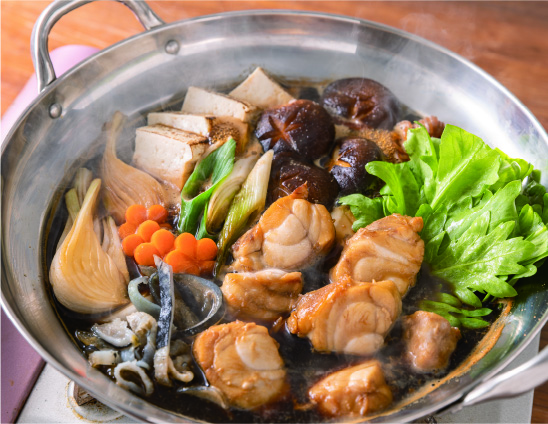
Ingredients (for two)
Pufferfish slices/skin: 8 slices
Grilled tofu: 1/4 block
Shiitake mushrooms: 4
Shirataki noodles: 2 bunches tied
Carrot slices: 4 cut into flower shapes
Shungiku greens: 1/3rd of a bunch
Wase (early) onion: 1
Leek: 1
Stock mix
Soy sauce (honjozo): 150 cc
Sake and mirin: 100 cc each
Granulated sugar: 5 tablespoons

How to Prepare
1. Rinse the pufferfish in hot water, remove the sliminess and froth, and slice the skin into thin strips.
2. Cut off the stem of the mushrooms, pat dry the shirataki noodles, cut the carrot slices into flower shapes, and parboil together for 2-3 minutes.
3. Cut greens into lengths of 6-7 cm, chop the onion into 8 even sections, and slice the leek diagonally into pieces.
4. Place the stock mix into a pot and heat; add the ingredients above in order and serve when cooked, perhaps dipping into a beaten egg for extra flavor.




